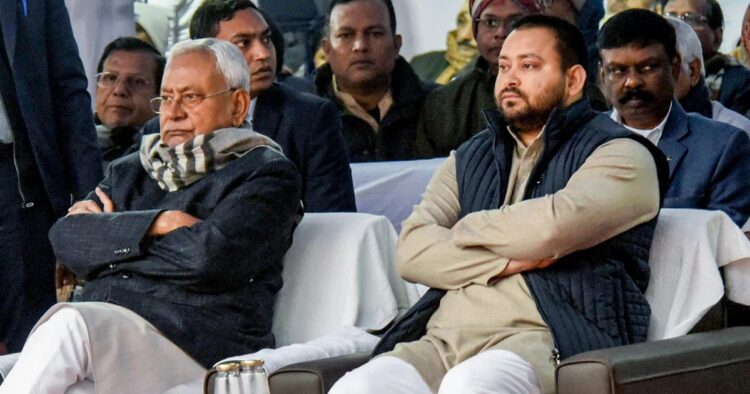In a surprising turn of events, Nitish Kumar is poised to take the oath as Bihar Chief Minister once again, with the backing of the Bharatiya Janata Party (BJP). This development echoes the familiar script from the 2020 elections, highlighting the dynamic nature of Bihar’s political landscape.
Amid the unfolding crisis, both the Congress and the Rashtriya Janata Dal (RJD) have convened meetings with their legislators. However, the Congress vehemently denies any connection to the evolving political scenario, asserting that their meeting is focused on preparations for Rahul Gandhi’s ‘Bharat Jodo Nyay Yatra.’
Nitish Kumar’s political journey, once synonymous with stability and development, has transformed into a tale of flip-flops and realignments, reflecting the volatility of the state’s political environment.
Mahagathbandhan in Bihar: The Mahagathbandhan, or Grand Alliance, was the ruling coalition in Bihar until Nitish Kumar decided to part ways with it. The alliance included the Janata Dal (United), Rashtriya Janata Dal (RJD), Indian National Congress (INC), and various left parties, such as the Communist Party of India (CPI), Communist Party of India (Marxist-Leninist) Liberation (CPIML), and Communist Party of India (Marxist) (CPIM).
JD(U) Leaders Rush to Nitish Kumar’s Residence: Amidst the political turmoil, key leaders of the Janata Dal (United) (JD(U)) rushed to the official residence of Bihar Chief Minister Nitish Kumar. Former national president Rajiv Ranjan Singh, ‘Lalan,’ Minister and National General Secretary Sanjay Kumar Jha, and State Legislative Council Chairman Devesh Chandra Thakur were among those who reached 1, Anney Marg, the CM’s residence. The gathering occurred simultaneously with a meeting of legislators from the Rashtriya Janata Dal (RJD), the current ally of JD(U).
As the situation unfolds, all eyes are on Nitish Kumar and the political dynamics in Bihar, where alliances and partnerships seem to be in a constant state of flux.

















Comments